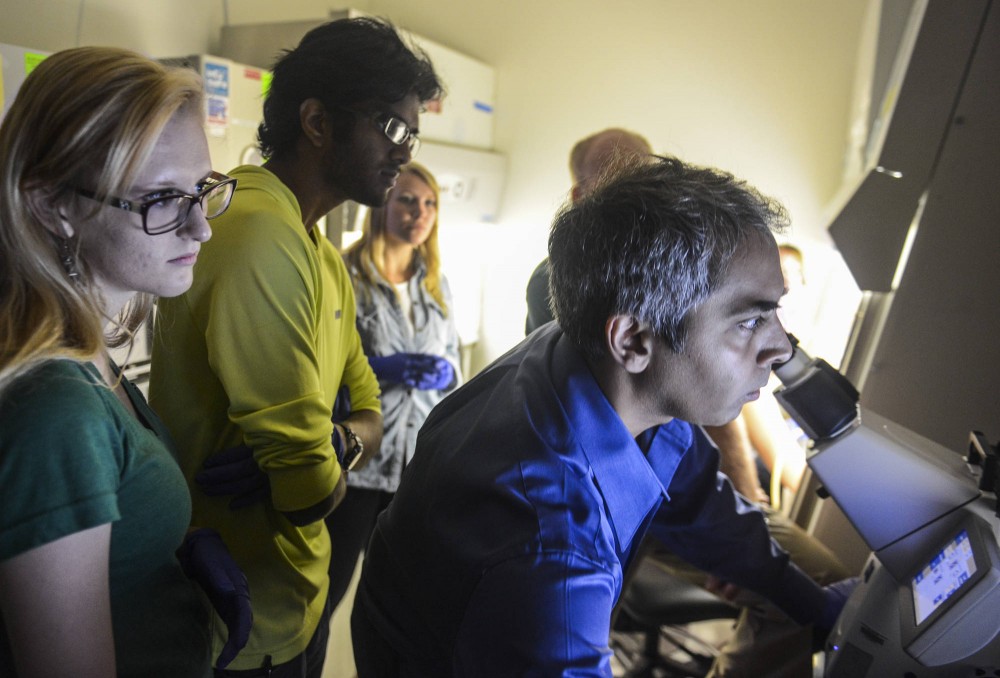With more funding, a recent discovery at the University of Minnesota could lead to new cures for more than one-third of all human cancers.
Researchers say the breakthrough could help create new cancer diagnoses and drugs, but in order for the studies to continue and expand, they are requesting more federal dollars.
Last month, Nature — an internationally renowned science journal — published a study conducted at the University’s Masonic Cancer Center that said cancerous cells are created when a major cancer-causing gene partners at high levels with a neighboring gene.
Now, researchers are seeking increased federal funding to expand the study, which they say could lead to new cancer diagnoses, therapies and drugs.
A 2012 discovery found that MYC, a gene responsible for up to one-fifth of cancers, amplifies to abnormal levels and leads to tumor growth when coupled with PVT1, a non-coding RNA. But if the two are separated, the MYC gene can return to its normal, pre-cancerous level, said Anindya Bagchi, lead researcher and assistant professor at the Masonic Cancer Center.
“It forms this vicious cycle in which the MYC protein become boosted, become abnormal, and then cells become cancerous,” he said.
Since the finding, the team has widened its focus from breast and colorectal cancers to all solid tumors. So far, Bagchi said the new discovery may affect nearly 40 percent of human cancers.
But more research is necessary before the discovery can aid doctors in diagnosing cancer or chemists can begin creating a drug to separate MYC and PVT1, Bagchi said, and that requires more money.
Bagchi received a grant from the American Cancer Society this spring for $165,000 per year for four years, starting this month, to continue the breast cancer portion of the study.
Ann Harris, co-founder and president of the Breast Cancer Awareness Association, is also a breast cancer survivor, and she said the new discovery’s impact could be widespread.
“This is going to benefit the whole cancer world,” she said.
While the funding is sufficient to cover breast cancer research, Bagchi said, the team will apply for an additional $250,000 per year for five years from the National Cancer Institute to expand the study.
Federal funding wasn’t an option when the study began because the research was a high-risk venture and a financial gamble that didn’t guarantee an oncological discovery, said Douglas Yee, director of the Masonic Cancer Center.
Yee said even though awards in federal funding to conduct biomedical research are at low levels, the MYC study will likely receive the funding it needs after having gained the national attention.
“Now that this is published in a very high-impact journal, I’m sure Dr. Bagchi will have a lot more success in obtaining federal funding for his research,” he said.
The project was time-consuming and risky, Bagchi said, but resulted in a rare and important finding.
“You just have to take your chances, kiss a few frogs, and then the results come and surprise you,” he said. “That is called serendipity.”


